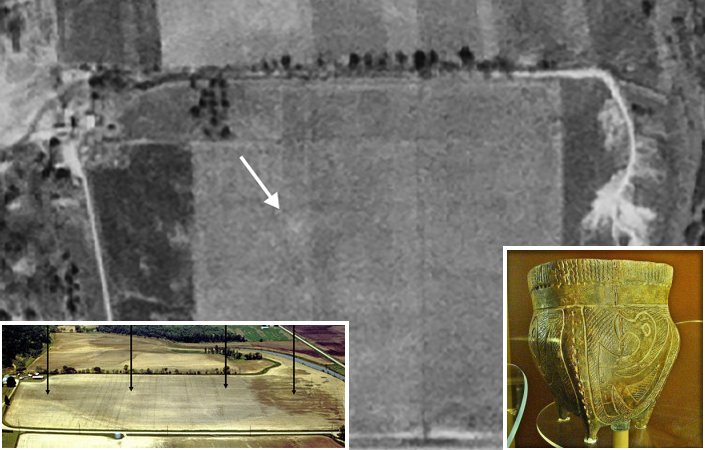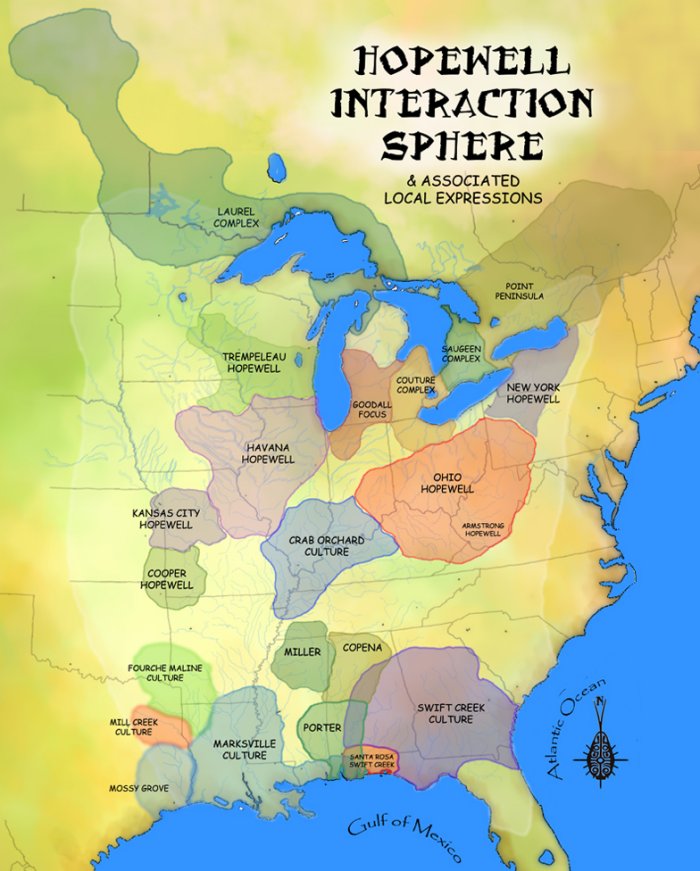Jan Bartek – MessageToEagle.com – Using magnetic imaging, scientists have re-discovered ancient burial mounds in Iowa that were presumably lost to history. These Native American mounds were spotted on land that had been plowed and leveled.
Another piece of good news is some of the burial mounds appear to be almost intact, meaning there is still hope scientists can find something of historical and archaeological value if the mounds are excavated.
Credit: Heironymous Rowe – CC BY-SA 3.0
It has long been assumed that most earthen burial mounds of eastern North America have been destroyed, but perhaps this may not be the case, and there is still a reason to be optimistic.
Native Americans began building mounds as early as 3500 B.C and most mounds date to the Woodland and Late Prehistoric periods, approximately 500 B.C–A.D. 1400. Throughout eastern North America, scientists have documented approximately 100,000 mounds, and they are primarily earthen structures.
The researchers identified at least six flattened mounds at a farm in southeast Iowa in a new study.
Those mounds are associated with the Havana Hopewell culture that is considered ancestral to the groups who eventually formed the Mississippian culture that built Cahokia. The Havana Hopewell culture lived in Iowa and other parts of the Midwest from about 100 BC to about 300 AD.
“Mounds and earthworks are highly susceptible to damage by agricultural practices, but careful measurement of soil magnetism shows that “leveled mounds are detectable and may retain subsurface integrity even when above-ground evidence has disappeared,” the researchers write in the scientist paper.
Vertical panchromatic air photo of Gast Farm, October 1949. Mound location indicated by light-colored soil (arrow). Source: Photo A000700080454, Army Map Service; U.S. Geological Survey 2020
One such mound existed on the Gast Farm in the Mississippi River valley. According to scientists, “in the 1950s, landowner Dan Gast tried to interest archaeologists in the mound, but as a result of mutual misunderstandings, Gast leveled the mound.
Oblique Kodachrome air photo of Gast Farm. View to north. Closely spaced north-south lines are pathways 10 m apart made during the controlled surface collection. Light-colored bands were thought to be possible earthworks. Credit: William Green
During earthmoving, he recovered typical Havana Hopewell ceremonial objects: copper axes, platform pipes, and sheet mica. The mound had been well known locally, with reports suggesting it measured approximately 30 m in diameter and up to 3 m in height.”
Magnetic gradiometry results (left) and interpretations (right) of the Gast Farm mound group. Credit: Green, W., Wiewel, A., & De Vore, S.
Large-area geophysical surveys can rapidly cover large tracts where mounds have been reported or suspected. This is an excellent approach when studying these structures because previously unknown mounds, mounds that had been considered destroyed, and mounds whose status was unknown can be revealed or rediscovered, improving knowledge of ancient landscapes and expanding preservation and conservation opportunities.
Native American artifact housed at Hopewell Culture National Historical Park. Credit: Deborah Platt
While magnetometry has been shown to be useful to identify signs of ancient communities, “we showed that we can also locate mounds by measuring soil magnetism,” says John Doershuk, head of the Office of the State Archaeologist at Iowa.
“These mounds may have features such as burial pits that are still partly intact below the depth of plow disturbance. Earlier magnetic studies in Ohio had identified flattened earthworks—geometric enclosures with infilled ditches—but not burial mounds.”
See also:
The discovery of burial mounds is crucial if scientists want to learn more about the history and traditions of the Havana Hopewell culture.
There have been some hopes the Aikman Mounds in Arkansas may explain the Hopewell culture’s Mysterious disappearance. The newly discovered structures in Iowa can offer more clues about what happened to these mound builders. Despite not being a warrior-like race, the Hopewell couldn’t survive, and they vanished around the turn of the fifth century. The cause of their disappearance is still unknown. Scientists say climate change, drought, warfare, and epidemics ended the Hopewell culture.”
Written by Jan Bartek – MessageToEagle.com – AncientPages.com Staff Writer








